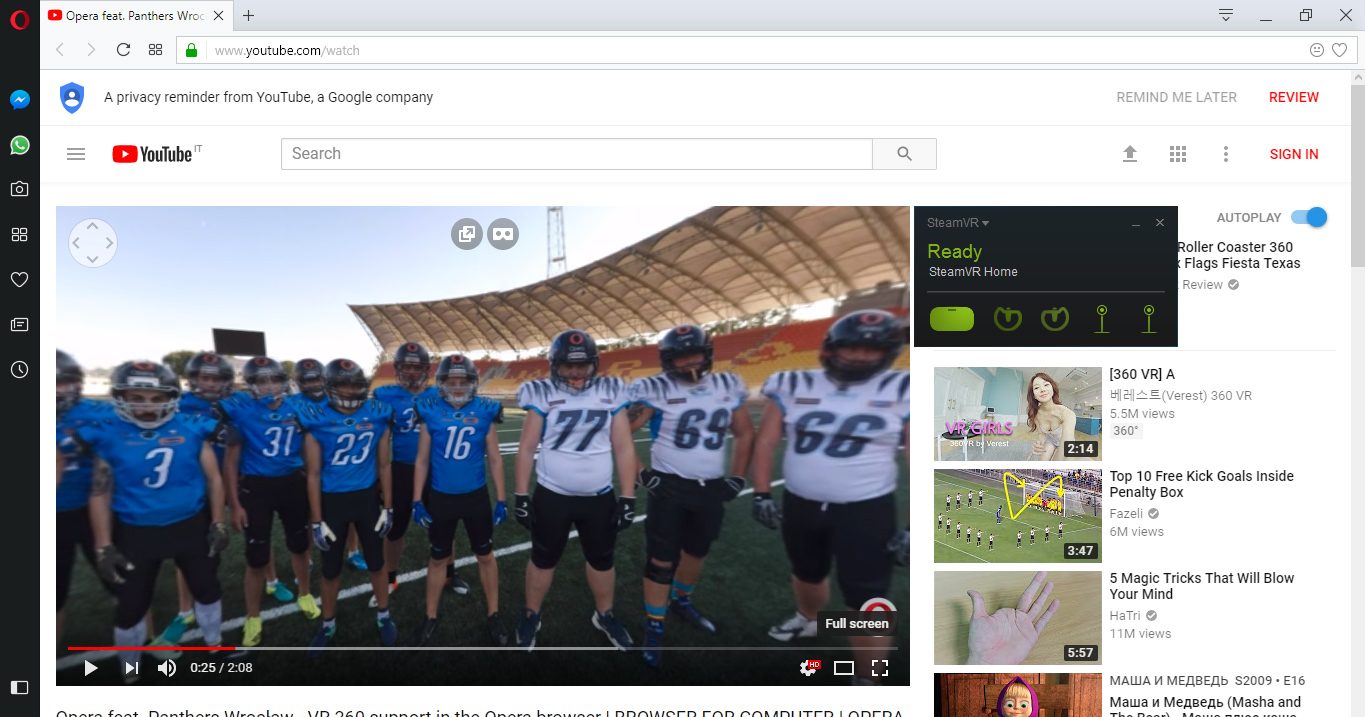For OpenVR-compatible headsets like Oculus Rift and HTC Vive, watching streaming 360 video from from your browser is now as simple as clicking a button and putting on your headset. This is all thanks to Opera’s latest version of its developer browser, which now supports 360-degree video playback in VR headsets directly via a built-in player. The company also says they’re planning to integrate full WebVR support in the future.
Now that video streaming giants like YouTube, Vimeo and Facebook natively support spherical video formats, there’s more 360 content than ever before. For VR headset owners though, there really hasn’t been a seamless way of quickly watching these videos in VR while browsing the web from your monitor.
Support for instant VR video playback includes 360, 180, and standard video formats (viewable as a floating window in a ‘void’) from most major streaming services including YouTube, Facebook and Vimeo.
The latest Opera developer browser automatically detects whatever VR headset you have via OpenVR, Steam’s API that allows multiple headsets to hook into Steam content. From a user’s perspective, all you have to do then is navigate to a 360 video and press the ‘VR mode’ button.
Future WebVR Support
WebVR is an initiative that delivers content built with JavaScript and WebGL to VR headsets, even integrating the various input devices available like tracked motion controllers. It’s mission is essentially to make the web a viable platform for hosting lightweight VR content that you can consume just as easily as you would any 2D webpage.
The team behind Opera says 360 playback for VR headsets is only “the first step on the path for a fully immersive and compatible VR experience on a web browser.”
There are already a few PC and mobile browsers that natively support WebVR, including Mozilla VR, Chrome for Android, Microsoft Edge, Chromium, Samsung Internet for GearVR, Oculus Carmel and Mozilla’s Servo (full list here); all of them giving users the ability to play web-based games and experiences that don’t require formal download. Only mobile VR browsers can boast having both 360 playback and WebVR in the same build currently.








